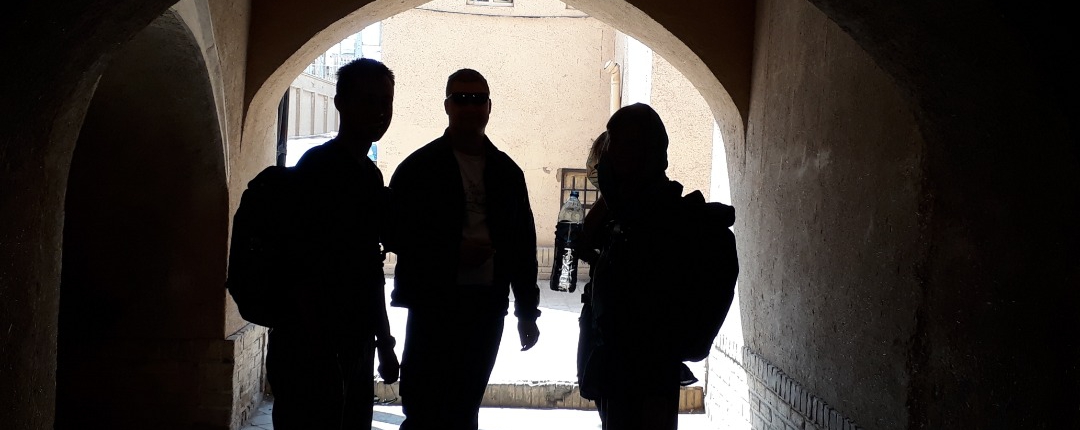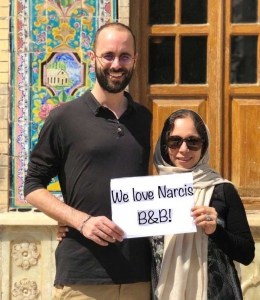Isfahan Grand Tour
12 Hours | from €40
12 Hours
Duration
Private Car
Transport
Isfahan
Start
1 to 10
Group Size
English
Language
Isfahan
End
In Isfahan tour the first destination for everyone who enters this ancient city is the Naghshe Jahan square where it hosts eye-catching buildings with lots of decorations in them. Under the order of Shah Abbas the first in 1602 this part of the city which is next to the older neighbor of Esfahan and encompass around 80000 sq.m was determined to be a new city center. Trying to do his best, the king made the whole city richer than ever and it can be understood by thriving the great bazaar in north, damascening The Ali Qapoo palace’s inner walls and the economic situation related by European ambassadors. Demonstrating the four aspect s of life, the king allocated the southern part to a mosque called Jameh Abbasi ( the religious part), the western area to a great palace that was the tallest skyscraper in Iran called Ali Qapoo ( showing the goverment’s power) the eastern side to Sheikh Lotf Allah mosque that was related to science and different teaching majors and the last, northern part to a Grand Bazaar showing the economical aspect of life.
Two more popular bridges, Si-O-Se Pol and Khajo Bridge which allow Zayandeh-Rud River to pass through and continue its way to Gavkhooni wet land are our next destination in Isfahan tour. The first is also called Julfa bridge (because it leads to Armenian neighbor, Julfa) and Allah Verdi Khan (who ordered to build this bridge). This 312 m long and 6m wide bridge hosts many people around the city each night who want to share their feelings with the river.
The fore-mentioned Khajo Bridge which is derived from (Khaje) means a rich man is the gate of Khajo neighbor, the one which the courtiers of Safavid court choose as their neighbor.it also facilitates the passing caravans’ transmission who wanted to come to Esfahan from Shiraz or vice versa. Each night there are some euphonic people singing Iranian songs that makes you feel excited.
There are only a few of the great palaces with decorations left from the time that Esfahan was the capital of the country. Chehelsoton and Hashtbehesht are two accessible ones that carry some good memories with themselves. The first is located jest behind The Ali Qapoo palace in western side of the square. It’s an example of Persian garden with its lovely Kushk (or Kolah Farangi) that is full of beautiful paintings about ceremonies and wars (two separate events!) in Safavid time. Each year the Norouz (Iranian new year) was held in this palace and you can’t imagine how it was when the king, courtiers, ambassadors and other wealthy people like merchants gathered together to celebrate. The entrance was fully mirror- worked but about 120 years ago they were transferred to Tehran by the Qajar prince , Zel –Al-Soltan.
The second was dedicated to the huge group of the king’s wives who tried to do their best to catch the king’s attention by doing different activities. In fact, the whole palace embraces small but lovely chambers. At first it was called the gate of the heaven which was the true name because with its girls in it the whole building was designed to be an earthly heaven. For the great king. Even Fath-Ali Qajar (the second Qajar king) used to have some rest in this palace with his wives when he was in Esfahan about 200 years ago but unfortunately at this time it lost its function and now is open for everyone to visit inside!
Maybe you thing that Islam dominates the whole city but Shah Abbas’s force made the Armenian to immigrate from different parts of north-west Iran specially (Julfa) to the New Julfa in Esfahan. There were some incentives for forcing them but the most important of all was to make the city wealthier. Being nice to people, the king also gave them pieces of land for their residence and tillage.
There are 13 churches in this neighbor nowadays but the most spectacular one is Vank( also called the church of all saviors).the mixture of Iranian, Armenian and European architecture makes this church unique and outstanding. The whole area embraces a museum, the church and an anthropological museum.
(The museum of Islamic and Iranian architecture) when you face this phrase you may think of a closed area containing some ancient objects but this is actually Jameh Mosque’s nickname. In fact, different parts and layers in this mosque makes it pretty distinct. The today structure was built on a Sassanid fire temple (reported by the Italian archeology group) after Arab’s invade. It’s an example of four-porch mosques and it is truly one of the best ones in Iran that certainly should be one of your main destination in Esfahan.
Narcis B&B, Isfahan, Isfahan, Iran






